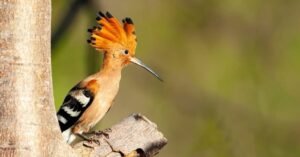What Eats Snakes?

Snakes are fascinating creatures that play crucial roles in their ecosystems. They are known for their adaptability and varied diets, but what about the creatures that prey on them? Understanding what eats snakes provides insight into their ecological interactions and the balance within their habitats. In this article, we will explore the various predators of snakes, their hunting methods, and the ecological significance of these predatory relationships.
Top Predators of Snakes
Table of Contents
ToggleSeveral animals are known to prey on snakes. These predators vary widely in size and hunting strategies, from large birds to other reptiles. Here’s a look at some of the most common and interesting snake predators:
Birds of Prey
Birds of prey, also known as raptors, are among the most effective predators of snakes. Their keen eyesight, powerful talons, and sharp beaks make them formidable hunters. Some of the most notable raptors that hunt snakes include:
- Eagles: Eagles, particularly the bald and golden eagles, are known for their impressive hunting skills. They have strong talons that can grasp and crush snakes. Their powerful flight allows them to swoop down and capture snakes in various habitats, including forests, grasslands, and near water sources.
- Hawks: Various species of hawks, such as the Red-tailed Hawk and Cooper’s Hawk, also prey on snakes. Their agility and speed make them adept at catching snakes, which they often consume whole.
- Owls: Owls, including Barn Owls and Great Horned Owls, are nocturnal hunters that feed on a variety of small to medium-sized prey, including snakes. Their silent flight and excellent night vision aid in locating and capturing snakes during the dark hours.
Mammals
Several mammals are known to eat snakes, taking advantage of their agility and hunting skills. These mammals often prey on snakes as part of a broader diet that includes other small animals.
- Mongoose: Mongooses are renowned for their snake-hunting abilities. Their quick reflexes and resistance to snake venom make them particularly effective. Mongooses are known to attack and kill venomous snakes like cobras and vipers, often using their agility to avoid strikes.
- Raccoons: Raccoons are opportunistic feeders that will consume a variety of foods, including snakes. They are skilled at foraging and can be quite effective at capturing and eating snakes, especially when other food sources are scarce.
- Foxes: Foxes, such as the Red Fox, are omnivorous and will include snakes in their diet when available. Their adaptability and hunting prowess allow them to capture and consume snakes along with other prey.
Larger Reptiles
Some larger reptiles have a taste for snakes, utilizing their size and strength to overpower these slithering creatures.
- Larger Snakes: Larger snakes, such as the King Cobra and the Burmese Python, are known to prey on smaller snake species. These snakes have evolved to include other snakes in their diet, and their size and strength allow them to subdue and consume their snake prey effectively.
- Monitor Lizards: Monitor lizards, such as the Komodo Dragon and the Water Monitor, are opportunistic feeders that will eat a variety of prey, including snakes. Their powerful jaws and robust physiques make them capable of tackling and consuming snakes of various sizes.
Amphibians and Insects
Although less common, certain amphibians and insects can also prey on snakes, particularly juvenile or smaller species.
- Large Frogs: Some large frog species, such as the African Bullfrog, are known to eat smaller snakes. These amphibians use their powerful tongues and strong jaws to capture and consume their snake prey.
- Insects: While insects are less likely to prey on adult snakes, they may feed on snake eggs or smaller, juvenile snakes. Certain beetles and ants are known to scavenge snake eggs, playing a role in the snake’s life cycle.
Hunting and Defense Strategies
Understanding the predatory tactics of these animals provides insight into the dynamic relationships between snakes and their predators. Each predator employs unique methods to capture and consume snakes:
- Ambush: Many raptors and mammals use an ambush strategy, where they wait silently until the snake comes within striking distance. This approach minimizes energy expenditure and increases the chances of a successful capture.
- Pursuit: Birds of prey like hawks and eagles often use pursuit strategies, where they actively search for and chase after snakes. Their keen eyesight and speed enable them to track and catch their prey efficiently.
- Camouflage and Stealth: Some predators, such as monitor lizards, use camouflage and stealth to approach their prey undetected. By blending into their surroundings, they increase their chances of a successful ambush.
Ecological Importance
The presence of snake predators plays a crucial role in maintaining ecological balance. These predators help control snake populations, preventing any one species from becoming overly dominant. This balance is essential for preserving biodiversity and ensuring the health of various ecosystems.
- Regulation of Snake Populations: By preying on snakes, these predators help regulate snake populations. This control prevents overpopulation, which could lead to imbalances in prey populations and ecosystem disruptions.
- Biodiversity Maintenance: Predator-prey interactions contribute to biodiversity. The presence of various predators ensures a diverse range of species, each fulfilling a specific ecological role. This diversity supports ecosystem health and resilience.
Conclusion
In conclusion, a variety of animals prey on snakes, including birds of prey, mammals, larger reptiles, and even some amphibians and insects. Each predator employs unique strategies to capture and consume snakes, contributing to the dynamic balance of ecosystems. Understanding these predator-prey relationships highlights the intricate connections within nature and the importance of maintaining ecological balance. By recognizing the role that snake predators play, we gain a deeper appreciation for the complexity and interdependence of the natural world.













Post Comment